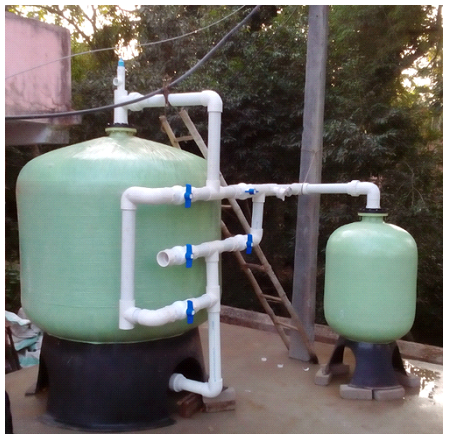
Arsenic Removal Plant
Long-term exposure to arsenic can lead to cancer of the skin, lungs, bladder, and kidneys. In water, arsenic and iron coexist. In this scenario, our arsenic removal plant has two steps, with the iron being removed first and then the arsenic being removed using adsorption technology. Our arsenic water purifier works on the principle of adsorption, in which the media acts as an adsorbent and adsorbs Arsenic (III) and Arsenic (IV) (V). The media also has the advantage of not absorbing Arsenic and thus passing the leaching test.
Advantages of Arsenic Removal Water Purifier
- Tested and Approved by CSIR
- Environment-friendly removal plant
- Works with a wide range of Ph in water
- 3-step filtration mechanism
- Available for capacities of 1000LPH to 50000 LPH
- It can remove arsenic up to 2 PPM from water
- Do not require any extra electricity for working
- Backwash water has no arsenic contamination
Features of Arsenic Removal Plant
- Membranes
- Coagulation
- Anion exchange
- Fe medium
- Softening
Arsenic Removal Plant in India
An arsenic removal plant is a facility designed to remove arsenic from water or other liquid streams. Arsenic is a toxic element that can cause serious health problems if ingested in large amounts over a long period of time. Arsenic contamination is a significant concern in many parts of the world, particularly in developing countries where access to safe drinking water is limited.
There are several different methods for removing arsenic from water, including adsorption, ion exchange, coagulation/filtration, and membrane filtration. The choice of method will depend on factors such as the concentration of arsenic in the water, the presence of other contaminants, and the specific requirements of the application.
Adsorption is a commonly used method for arsenic removal, in which the water is passed through a bed of adsorbent material such as activated alumina, iron oxide, or activated carbon. The adsorbent material binds to the arsenic, removing it from the water. Ion exchange is another method in which the arsenic is removed by exchanging it with other ions such as chloride or sulfate. Coagulation/filtration involves adding chemicals such as alum or iron salts to the water to form flocs, which are then removed by filtration. Membrane filtration involves passing the water through a membrane that selectively removes the arsenic.
Arsenic removal plants may be installed at the source of the contaminated water, such as a well or river, or at the point of use, such as in a household or community water supply. The design and operation of the plant will depend on the specific application and the required flow rate and capacity.
In summary, an arsenic removal plant is a critical facility for ensuring safe drinking water in areas with high levels of arsenic contamination. The choice of method will depend on the specific application and the required flow rate and capacity.

